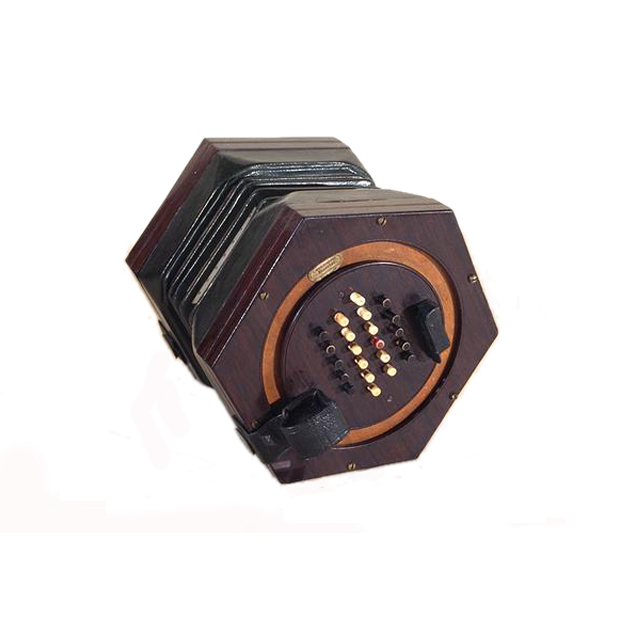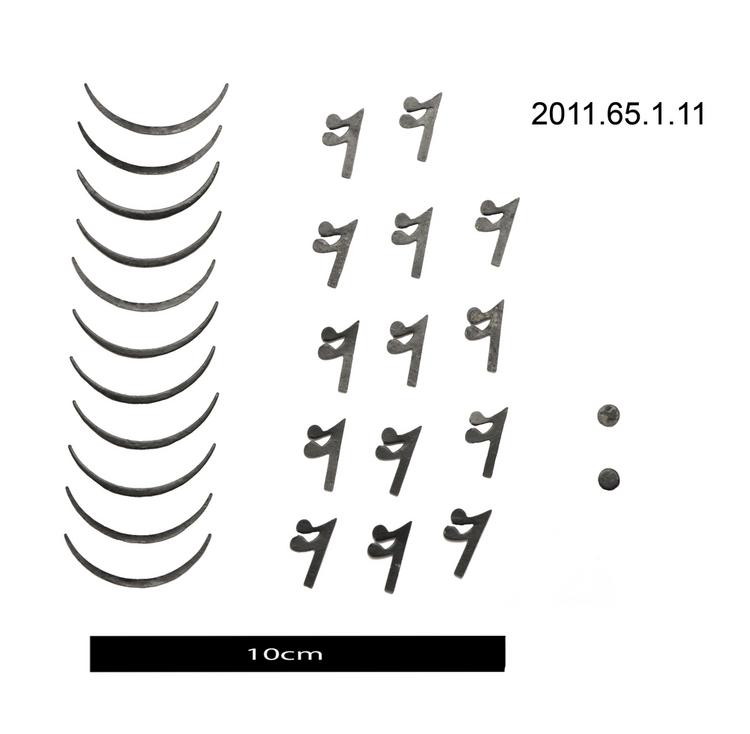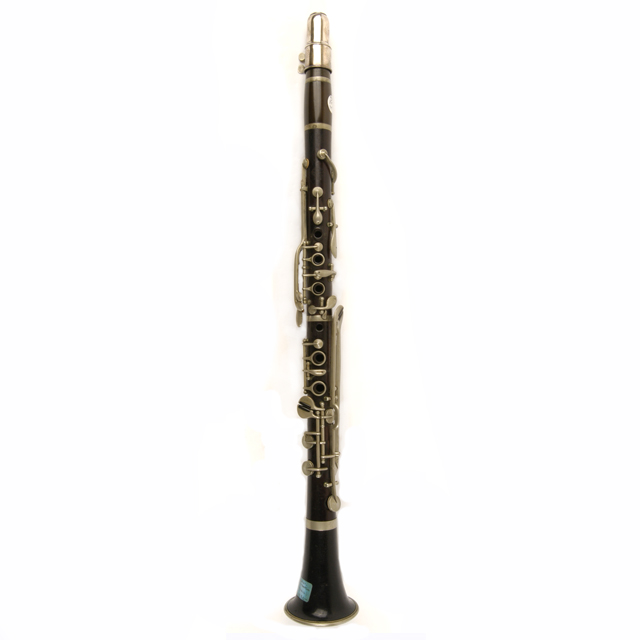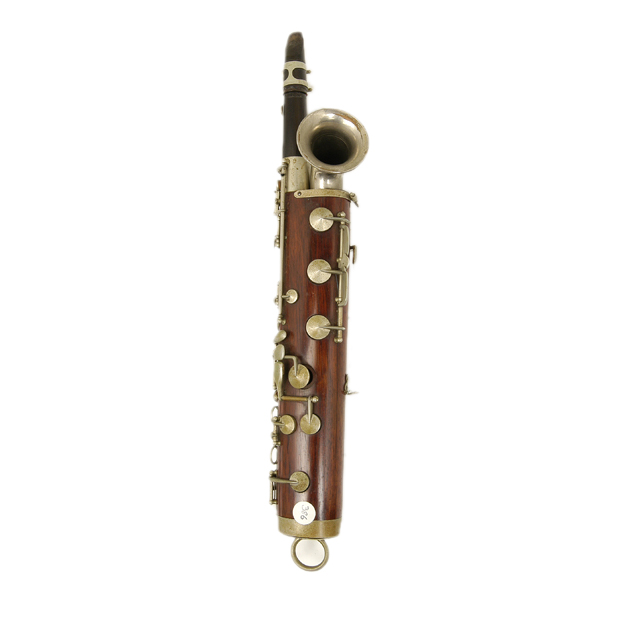
English system concertina. Serial number 773, bellows and reed pan 698. Oval paper label: 'By His Majesty's Letters Patent, C. Wheatstone, Inventor, 20 Conduit St., Regent St., London.' Rosewood ends built to standard width: 6.25 inches between parallel sides. The ends are plain, without fretwork, but in its place a circular section of the rosewood has been cut away, exposing the pine backing, for the purpose of amplifying the instrument's sound. 44 ivory buttons, black accidentals, stamped with note names, bushed. Original green leather straps with nickel screws. Four-fold green leather bellows with gold circle papers. Square-end nickel reeds. Hexagonal mahogany case.
The following information is recorded regarding the purchase of this instrument in the ledgers of the Wheatstone concertina factory (http://www.horniman.info): 8 Feb 1844: 44[keys] P[lain] Mr Gould (C1046, p.25) 17 Jul 1851: Mr J Harrison hire (C1047, p.22) 17 Dec 1852: Mr Scates 3.0.0 [ditto from line above:] same time [ie, bought both instruments at once] (C1048, p.15). This concertina was bought in 1852 by Mr Joseph Scates, who had started his career as a tuner for Wheatstone. In 1844 Scates set up as an independent concertina maker, although in 1847 he sold out to George Case and in 1851 is registered in Dublin as a 'Professor of the Concertina.' Scates frequently bought concertinas in bulk from other makers and sold them on with his own label. Many of the instruments sold in Dublin were supplied by Lachenal or Jones. On this occasion he bought only two instruments. The concertina is classified according to the system of Hornbostel and Sachs as a 'set of free reeds, with flexible air reservoir and keyboard'.






